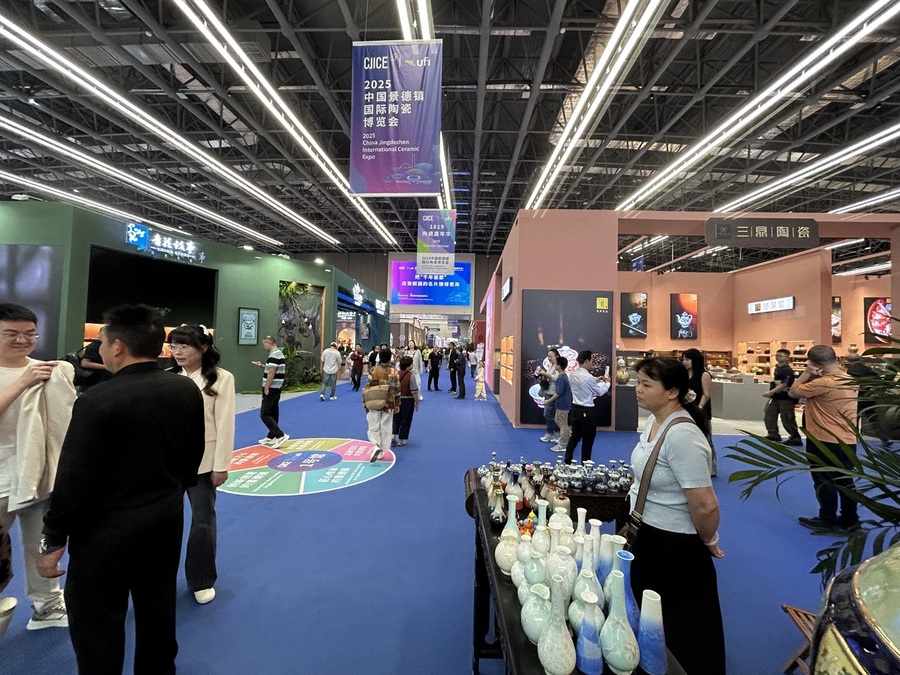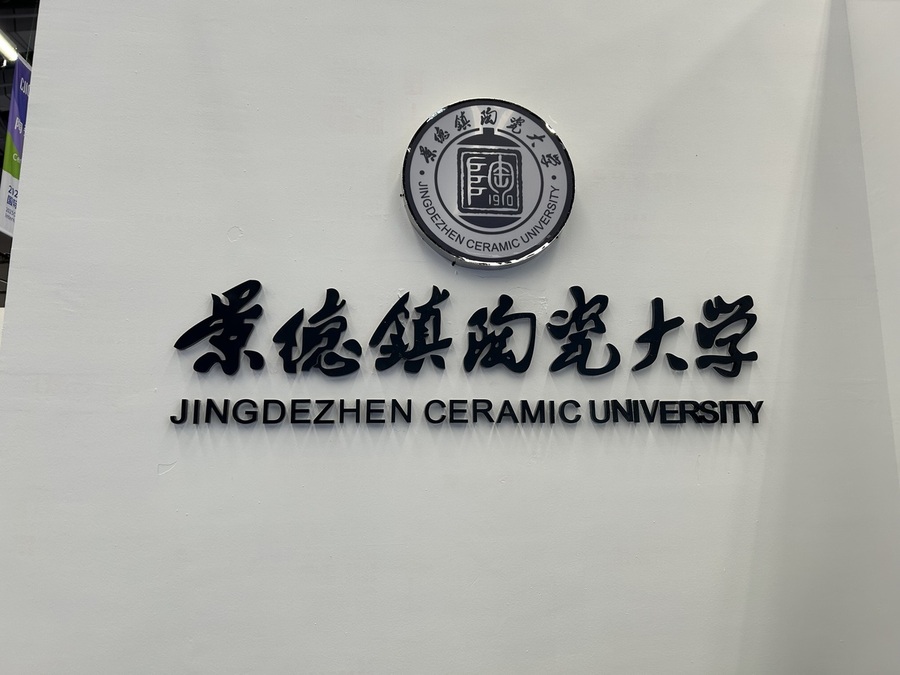Top 5 Ceramic Universities in Jingdezhen: Which One Is Right for You?
- Introduction
In this year’s 2025 Jingdezhen International Ceramic Fair, five ceramic universities from Jingdezhen all took part.
If you’re not familiar with these schools and can’t really tell the difference between them, or if you’re thinking about studying ceramic art in Jingdezhen but don’t know which school to choose, then this video should help you a lot.
Even for people already working in the field — when you know which university an artist graduated from, it gives you a better idea about their background and artistic training.
Now, these schools may all have “ceramics” in their names, but they’re actually very different from each other. So in this video, I’ll share my personal ranking of the five ceramic universities in Jingdezhen, based on real experiences and observations.
- How I Ranked Them
Before getting into the ranking, let me explain the standards I used.
I based my comparison on three main aspects:
First, the history of the university — when it was founded and how strong its background is.
Second, the nature of the institution — whether it’s a public or private university, and what category it belongs to in China’s higher education system. This really affects its academic status.
Third, the social influence — meaning how the school and its graduates are recognized in society.
For example, what kind of exhibitions their graduates take part in, how their works are received, and whether the school has international exchange programs or foreign students.
I also visited these campuses in person — I’ve been to their job fairs, observed how the schools are managed, and what the students’ attitudes are like during interviews.
And of course, when you walk through Taoxichuan Creative District, you’ll notice many independent ceramic studios and galleries. It’s not hard to find out which universities those artists graduated from.
All these observations together give a realistic sense of each school’s influence.
So, based on those criteria, here’s my full ranking of Jingdezhen’s five ceramic universities.

No. 5 – Jingdezhen Ceramic Technical College
Let’s start from the fifth place: Jingdezhen Ceramic Technical College, founded in 1978.
The school covers about 160,000 square meters and is a public vocational college.
It has around 3,000 students and about 290 staff members, so it’s relatively small in size.
Its strengths lie in ceramic fine arts and ceramic craftsmanship. The college mainly accepts junior and high school graduates, and after **four to five years of training, students receive an associate degree.
It’s a regional technical school, so the tuition is quite low — around USD 850 per year, including dormitory fees.
That’s a very affordable price for anyone wanting to learn practical ceramic skills in Jingdezhen.
No. 4–Jingdezhen Vocational University of Arts
In fourth place is the Jingdezhen Vocational University of Arts, a private university offering full-time undergraduate programs.
It’s quite new — founded in 2020 — and was actually developed from the former College of Science and Arts of Jingdezhen Ceramic University after obtaining a new private education license.
In China, opening a private university is highly regulated, so this one was established under Tao Wen Lu Holding Group, the company behind Tao Xi Chuan Cultural and Creative Zone.
It’s an undergraduate-level university, with tuition of around USD 3,000 per year per student.
The campus itself is modern, built along the hillside in the suburbs of Jingdezhen, using the natural terrain to shape its buildings.
There are 29 majors, but according to my visit and experience attending a lecture there, the school’s programs are too broad and not yet focused on one strong specialty.
Still, being new means it has potential to grow — and thanks to its corporate background, students have access to internship opportunities in Taoxichuan, Yishan Ceramic Workshop, the Imperial Kiln Museum, and even Hyatt Hotel, all under the same group.
So while it’s young, Jingdezhen Vocational University of Arts does have an advantage in linking art education with real industry experience.
No. 3– Jiangxi Arts & Ceramics Technology Institute
Next, in third place, is the Jiangxi Arts & Ceramics Technology Institute — quite a long name, right? This public vocational college was founded back in 1958, so it’s one of the oldest ceramic schools in the region.
It covers around 533,000 square meters — and has over 12,000 full-time students with more than 700 teachers.
That makes it a large-scale college, much bigger than most others in town. The tuition and accommodation fees are also about USD 850 per year, since it’s government-funded.
Over the years, the school has organized several international ceramic art training programs — for example, with Chiang Mai University in Thailand, and also partnerships withTajikistan and other countries through the “Study in China” exchange programs.
So yes, it even has foreign students in some of its program courses.
I once attended a job fair at this campus. The environment looked clean and new, with buildings that matched the typical Jingdezhen clay-colored style.
But I did feel the organization wasn’t very strong. It was a weekend morning, and not many students came to meet employers.
Interestingly, some students said they were officially registered under Jinggangshan University, meaning this college tries to raise its academic status by affiliating itself with a higher-level institution.
Personally, I think they don’t need to do that. This school should stay true to what it is — a strong vocational training college, focused on developing solid practical ceramic skills.
No. 2 – Jingdezhen University
Now let’s move to second place — Jingdezhen University. Many visitors, artists, or businesspeople who first come to Jingdezhen often confuse it with Jingdezhen Ceramic University, but they’re not the same.
Jingdezhen University’s best programs are Ceramic Fine Arts and Art Design. It’s a public university, originally known as Jingdezhen Education College, founded in 1977.
In 2013, it was upgraded to university status and renamed Jingdezhen University.
It remains state-funded, with the same affordable tuition — around USD 850 per year including housing.
Although it’s not part of China’s elite universities, it’s still quite a big school locally, with over 800 faculty members and more than 14,000 students.
The campus covers about 600,000 square meters. Its key strengths are Arts and Crafts, Environmental Design, Fine Arts, and especially Art Education.
Because of its background as a former education college, many of its graduates become art teachers in primary or secondary schools.
The university also offers programs in Sculpture,Product Design, and Digital Media Art.
When I attended their campus job fair, it was small — only about a dozen companies — but the management was good, and the facilities were well-maintained.
They also have their own gallery and museum for displaying works by teachers and students, which is a great addition.
So I think Jingdezhen University really deserves its No. 2 spot.

No. 1 – Jingdezhen Ceramic University
And finally, No. 1 — no surprise — Jingdezhen Ceramic University.
This is the most well-known ceramic university in China, and definitely the most influential one in Jingdezhen.
It’s a public undergraduate university with the qualification to enroll international students and even offer scholarships for them.
The main campus has now moved from the old Xinchang site in downtown Jingdezhen to the Xiang Hu campus.
It also oversees research institutions such as the China Light Industry Ceramic Research Institute and the **Ancient Ceramics Research Center.
The total construction area is about 760,000 square meters, and the school currently has 23,000 students, including 2,500 graduate students pursuing master’s and doctoral degrees. No other ceramic school in Jingdezhen has that level of academic qualification.
When I joined their job fair, it was very well organized — employers came from all over China, from Fujian, Guangdong, Shanghai, Zhejiang, and of course Jiangxi Province.
The fair takes place every spring and is one of the largest in the city.
Jingdezhen Ceramic University is also one of the main organizer of the Jingdezhen International Ceramic Art Biennale.
In 2023, I visited their campus museum when they hosted the Biennale — and the quality of the artworks was truly world-class.
By 2025, the university had already welcomed students from 60 different countries, training over 3,000 international students.
When I walk through Taoxichuan Art Street or Sanbao International Ceramic Valley, I meet many independent artists who are graduates of this university — professors, gallery owners, young ceramic designers — all contributing to the city’s creative atmosphere.
So yes, Jingdezhen Ceramic University truly lives up to its reputation as the No. 1 ceramic art university in China.
Conclusion
So that’s my personal ranking of the five ceramic universities in Jingdezhen.
Of course, this is just my observation — people who work in these schools might have their own opinions.
The top two are quite clear:
Jingdezhen Ceramic University ranks first,
Jingdezhen University is second,
and the other three vocational colleges still have plenty of room to grow and compete.
If you have a different point of view, feel free to **leave a comment below.
And if you’re planning to come to Jingdezhen to study ceramics or art-related programs, you’re very welcome to reach out and contact us directly.
Thank you for watching — and I hope this helps you better understand the ceramic education landscape in Jingdezhen.
